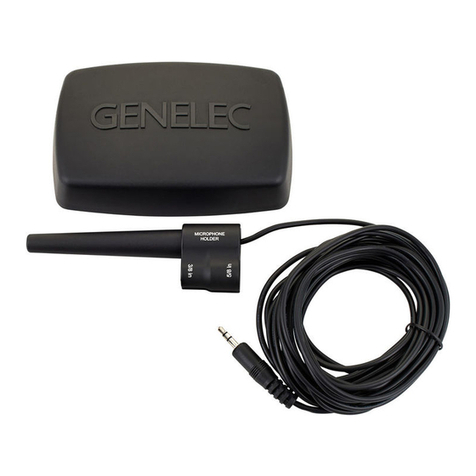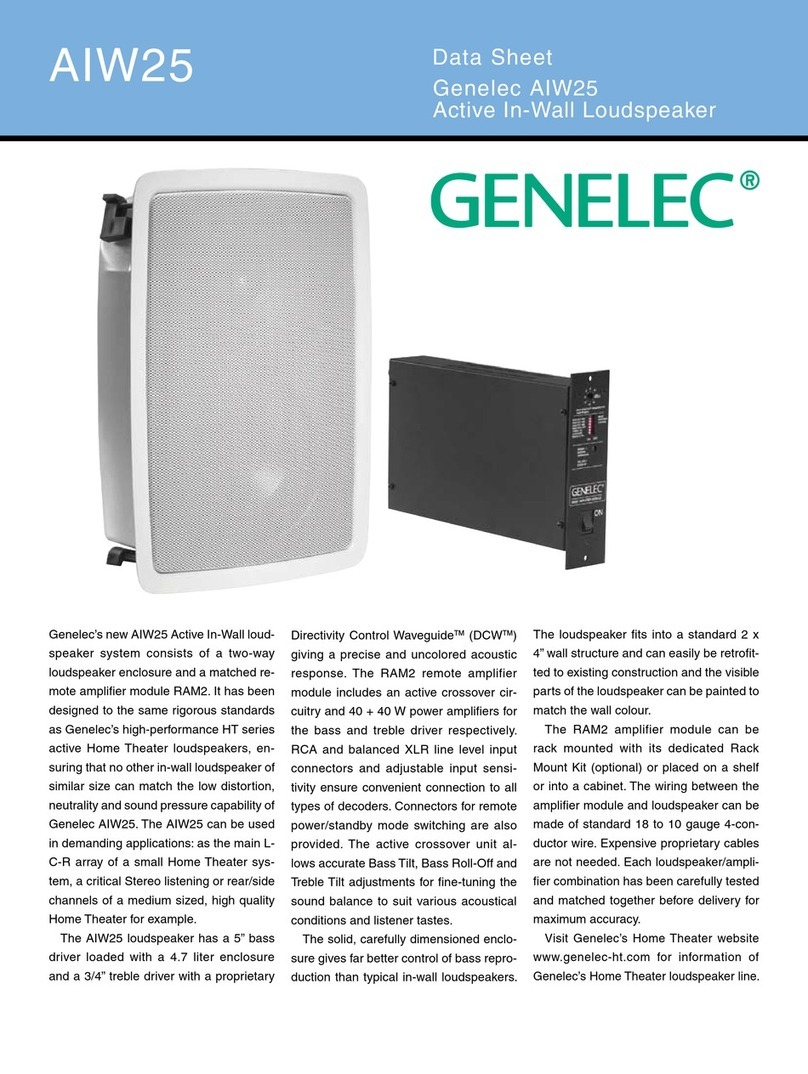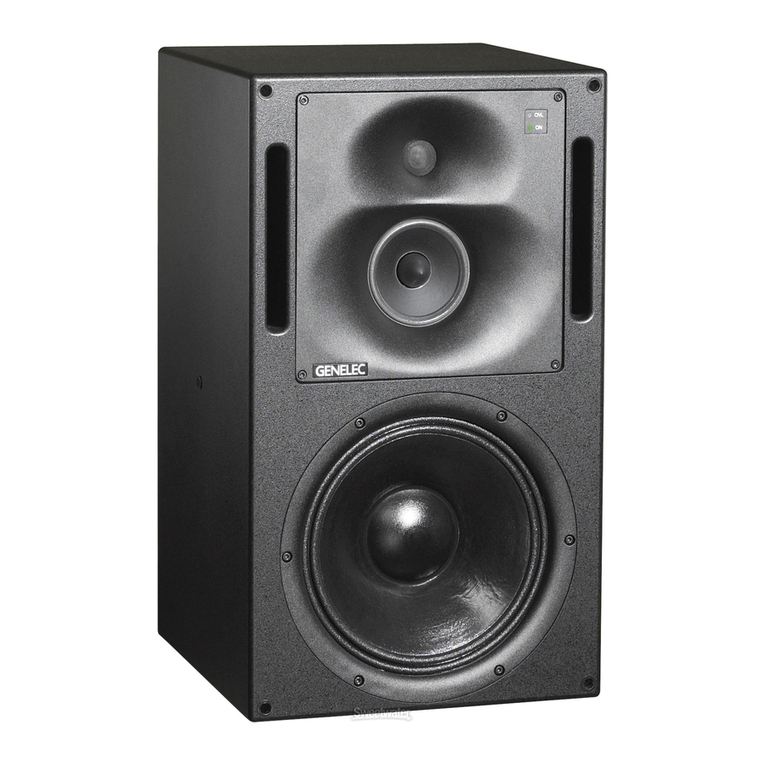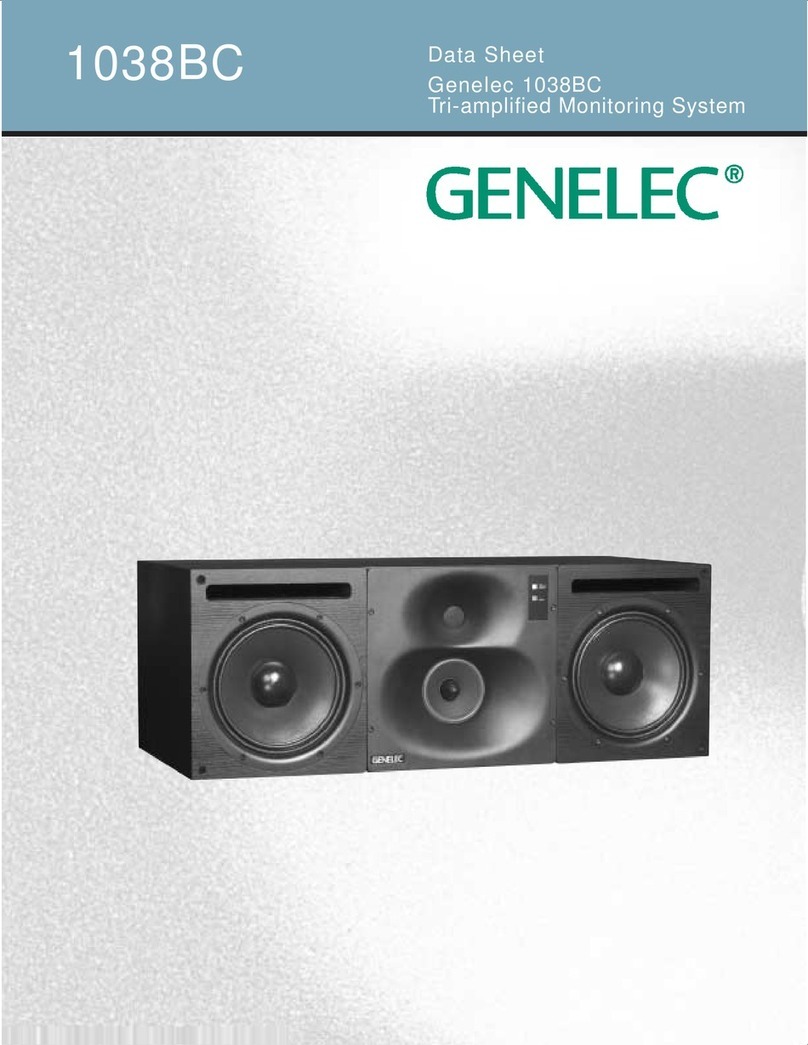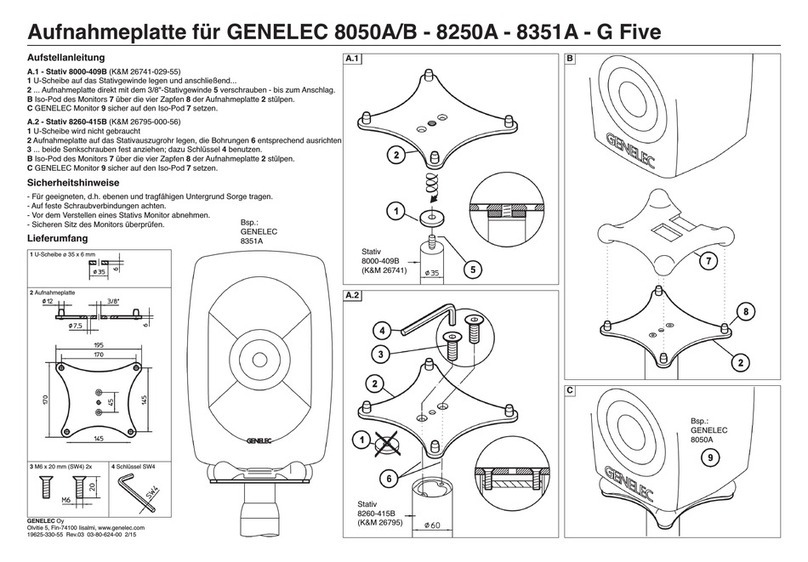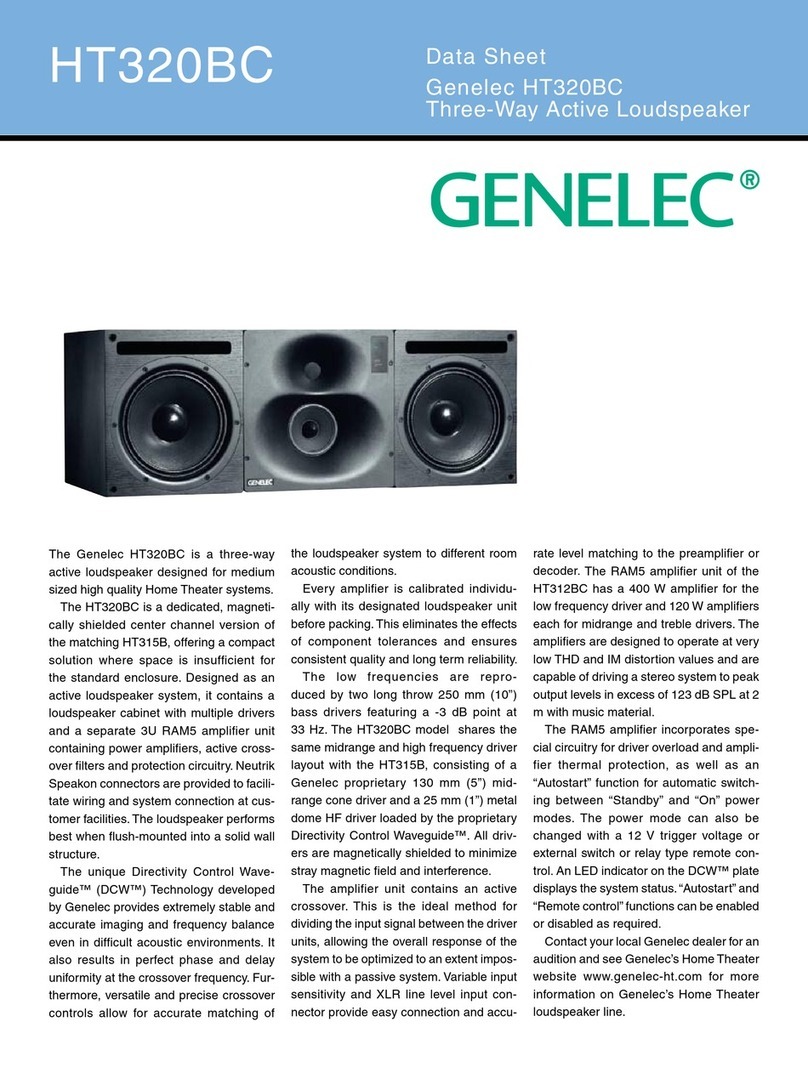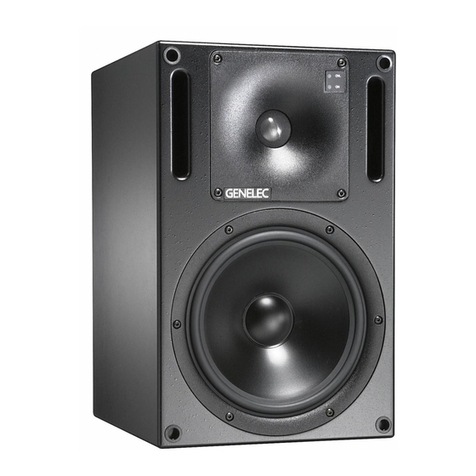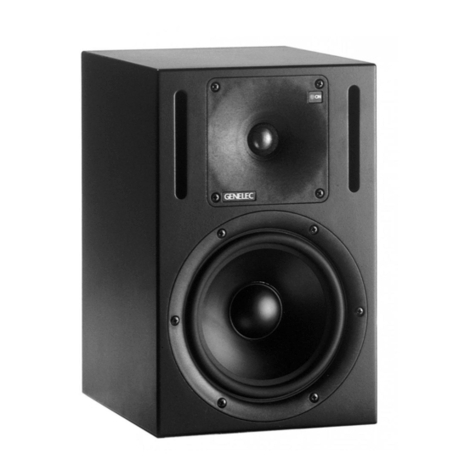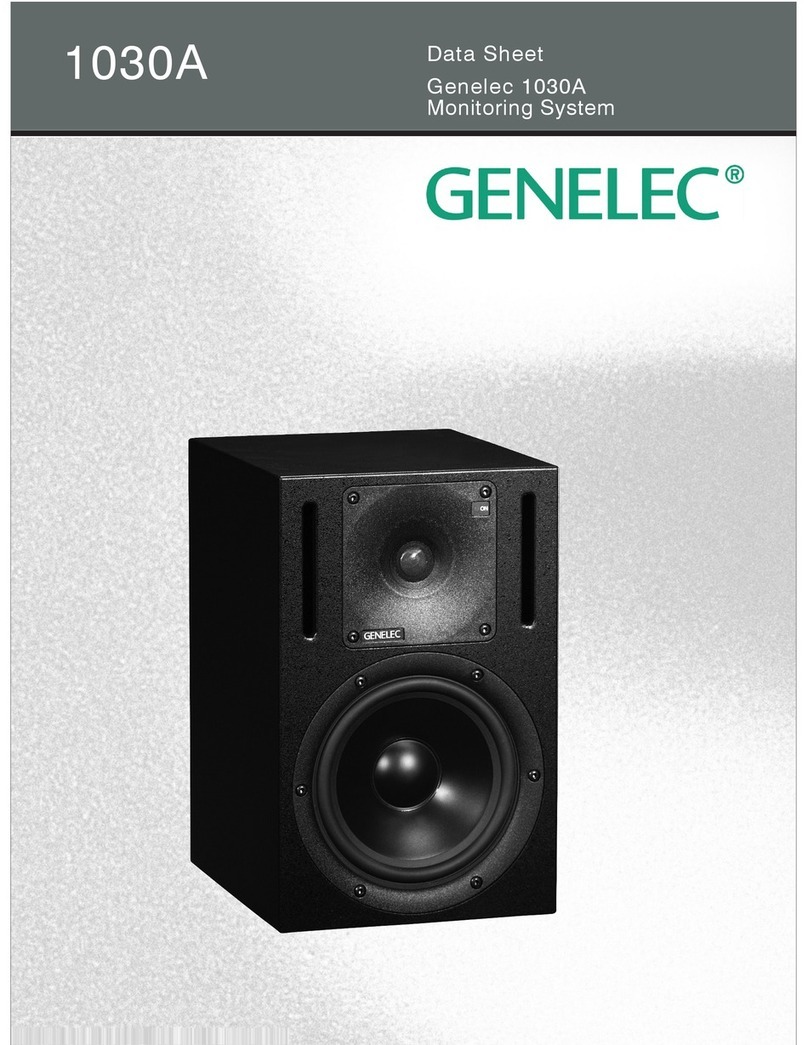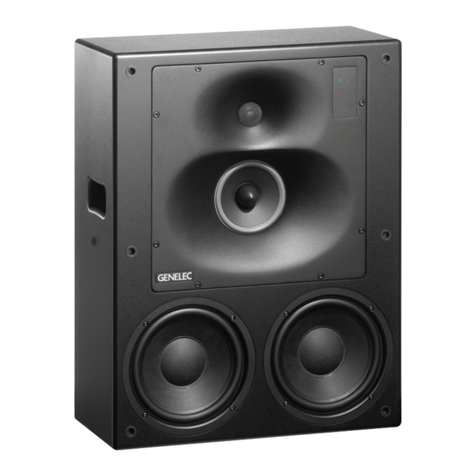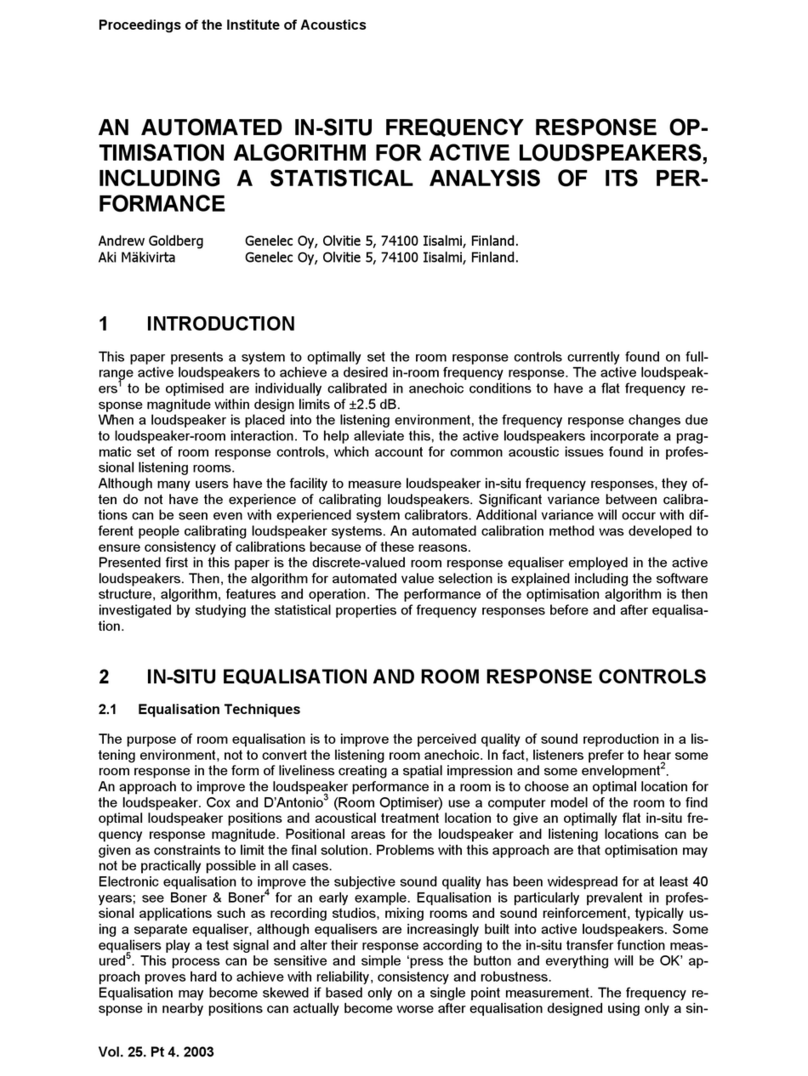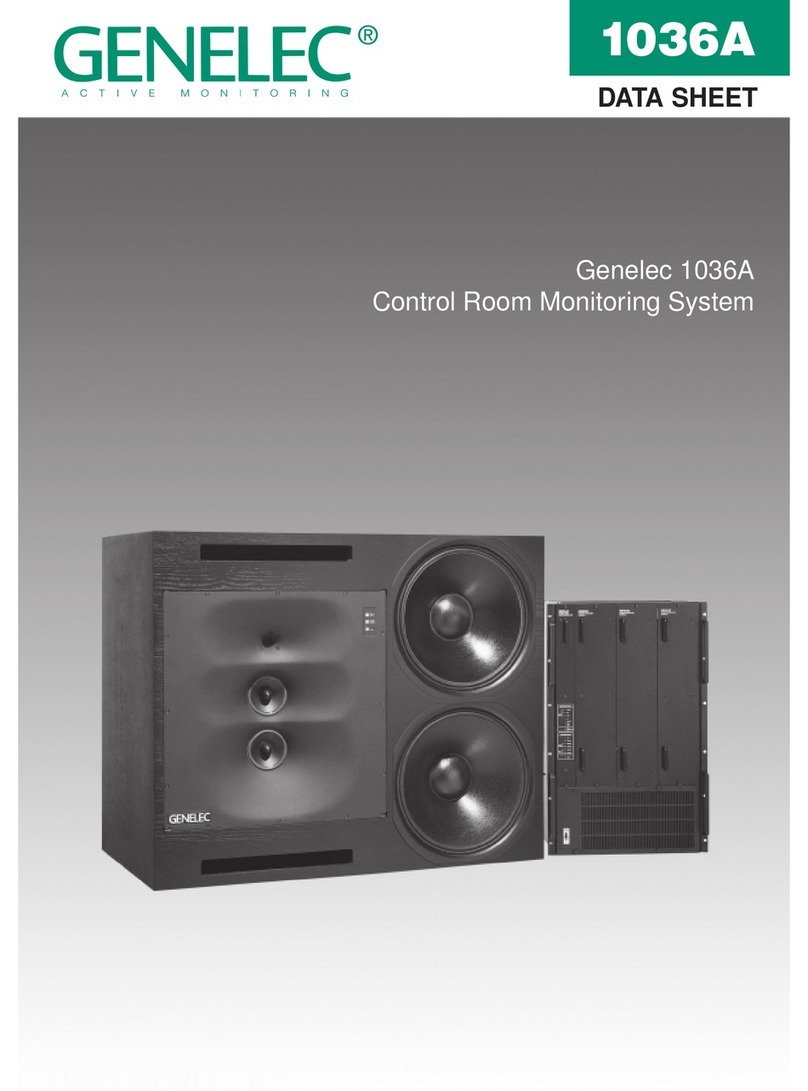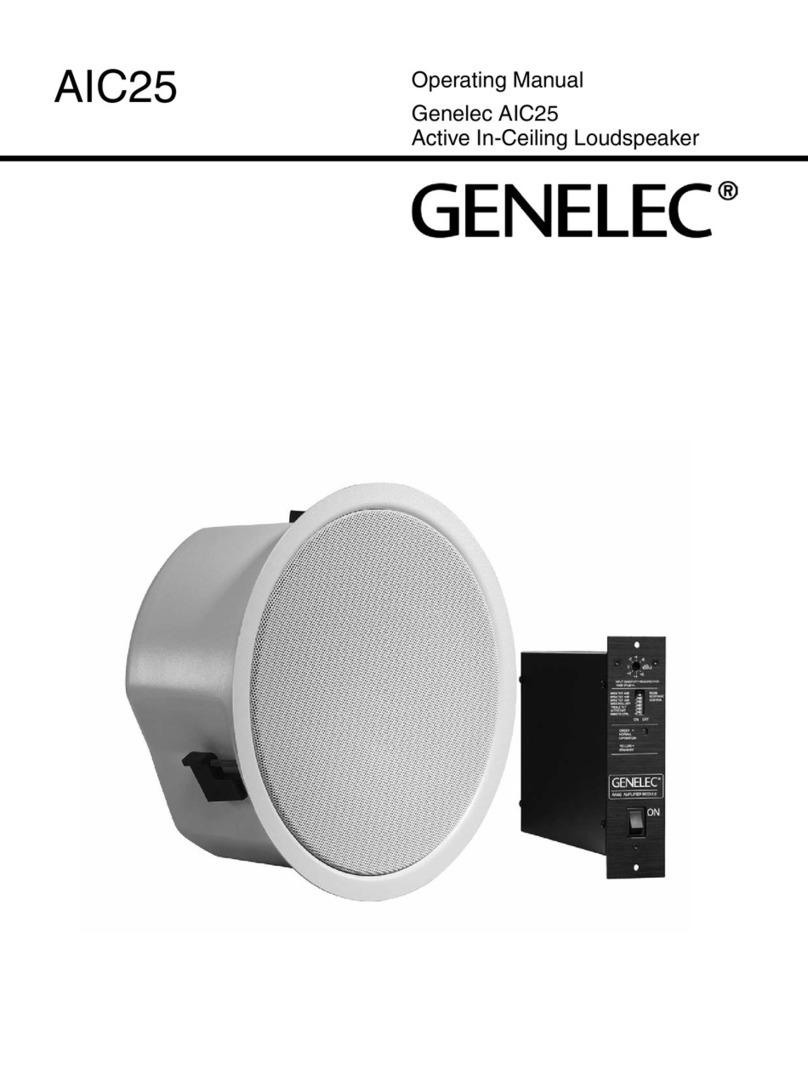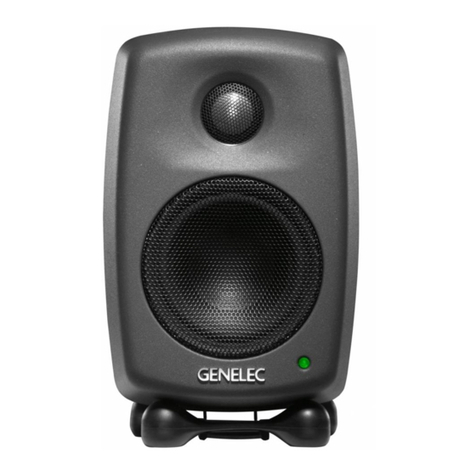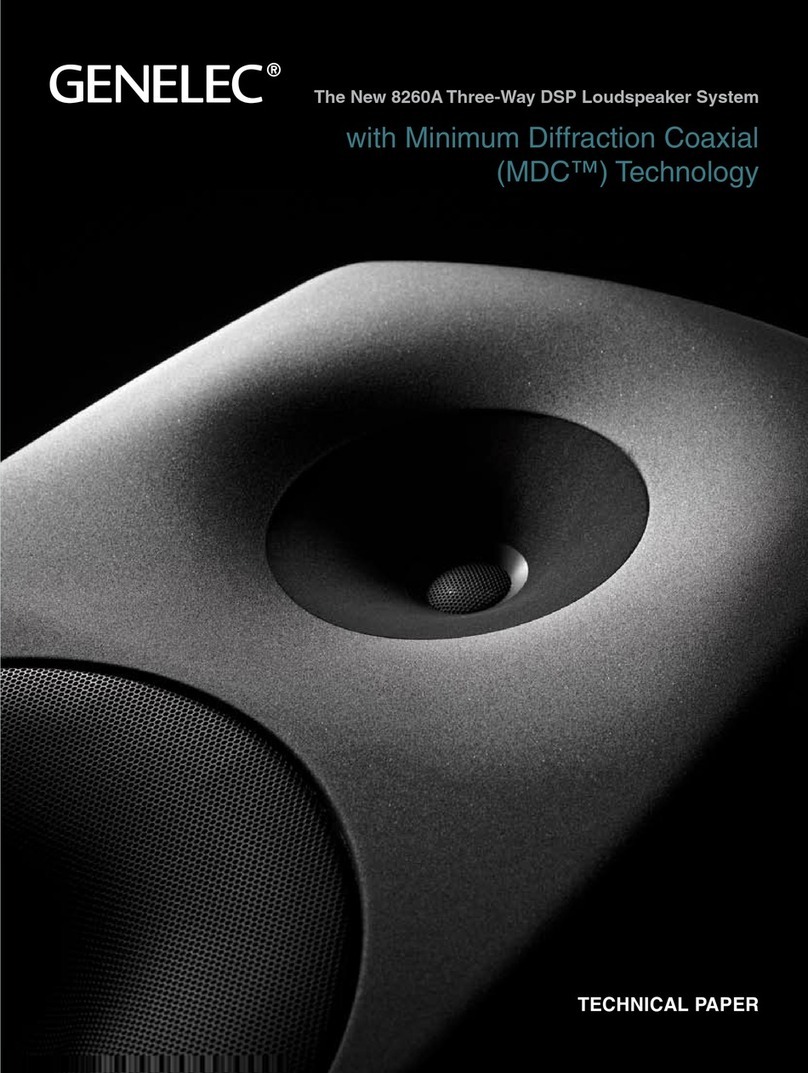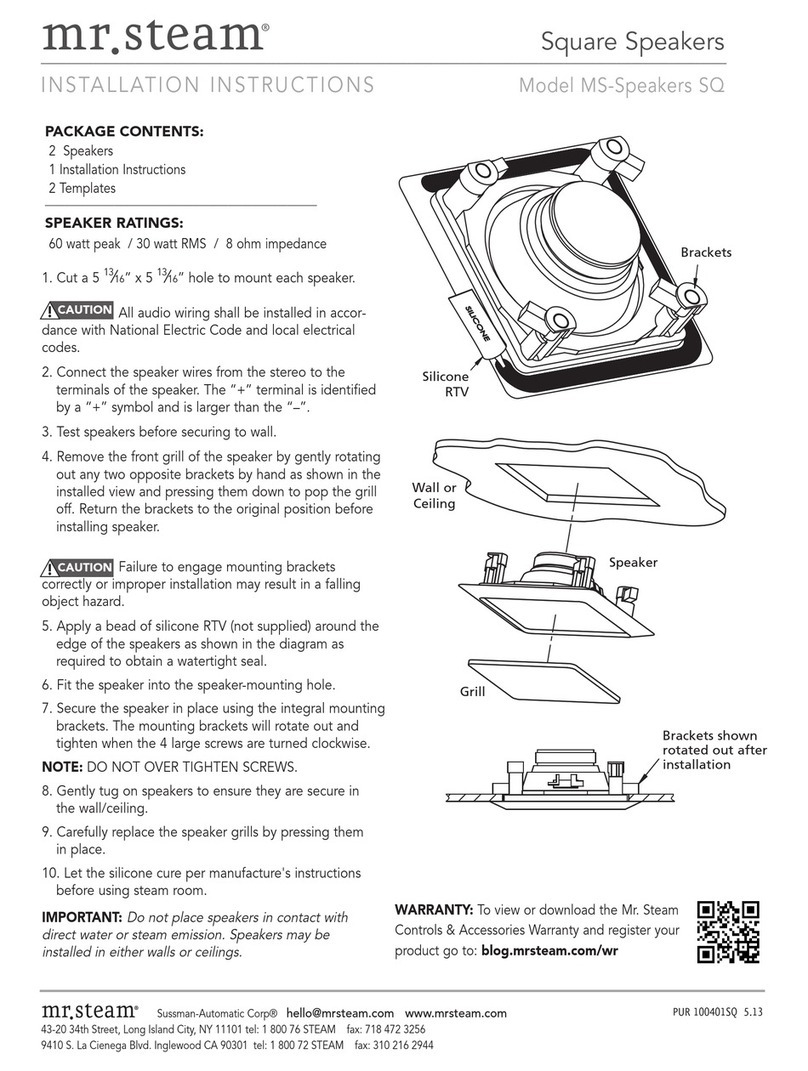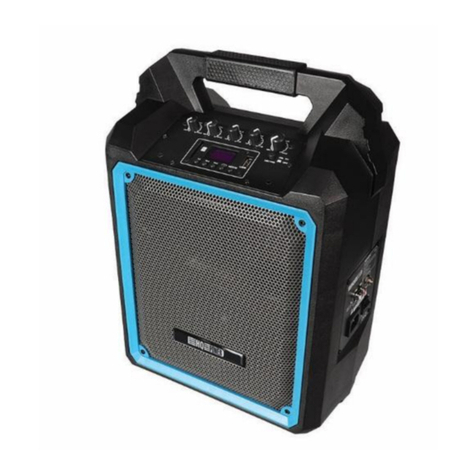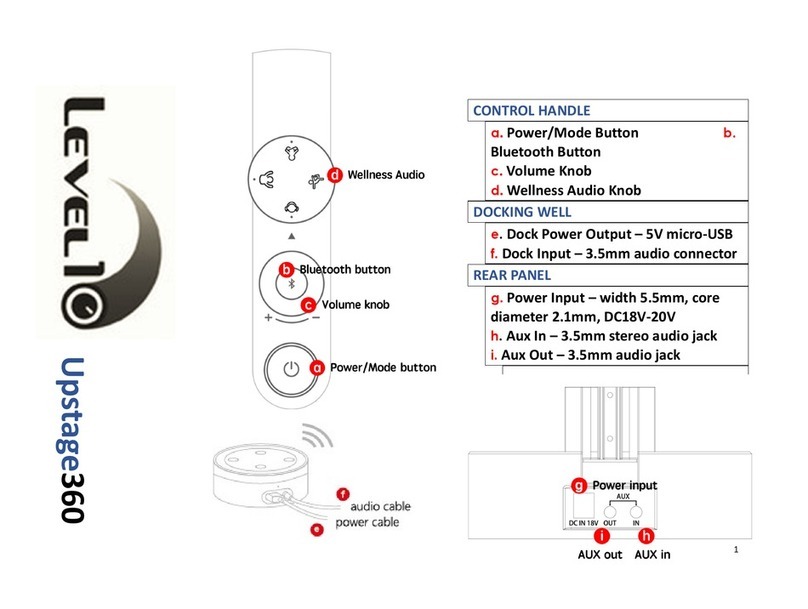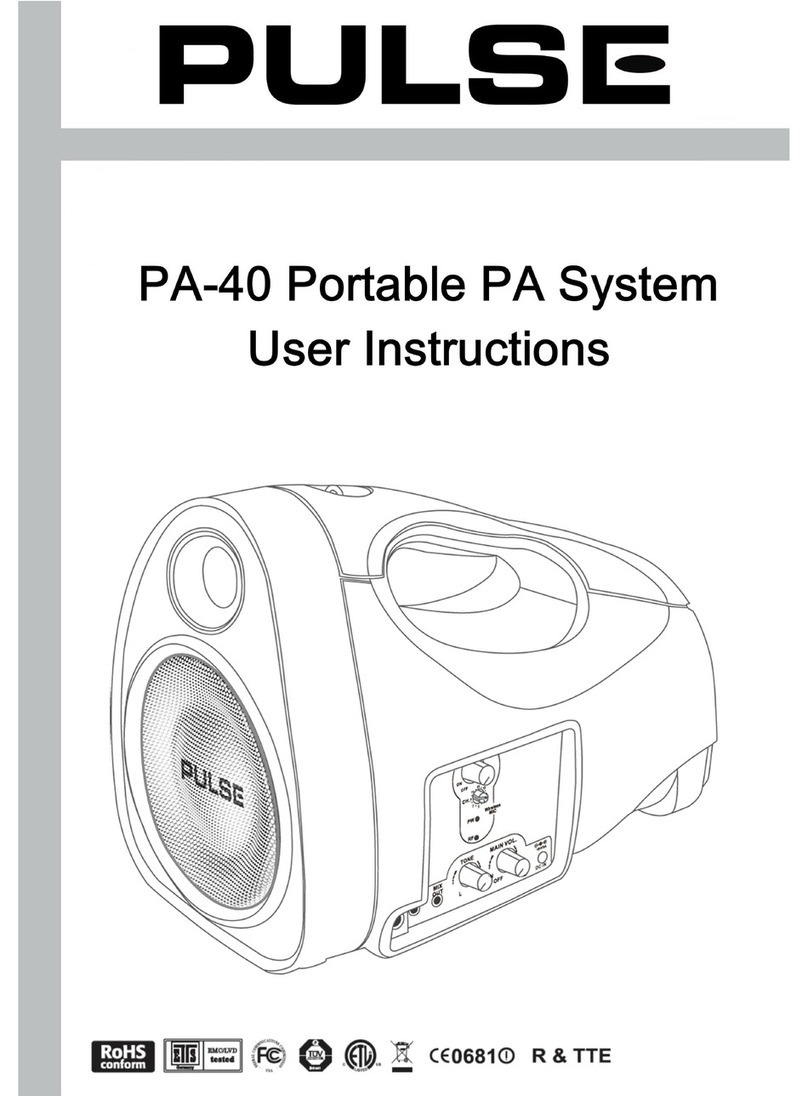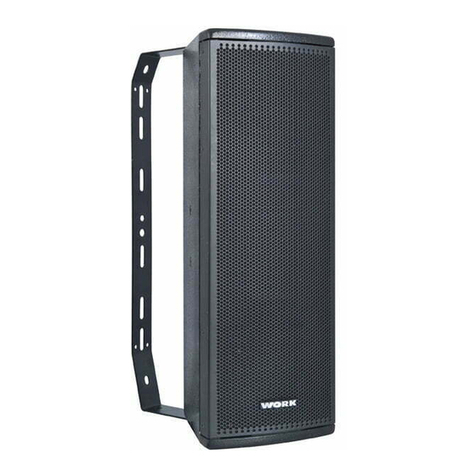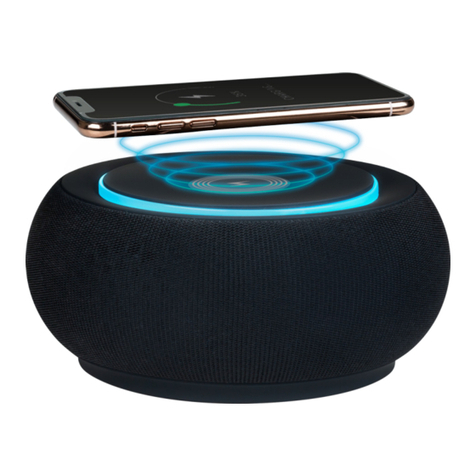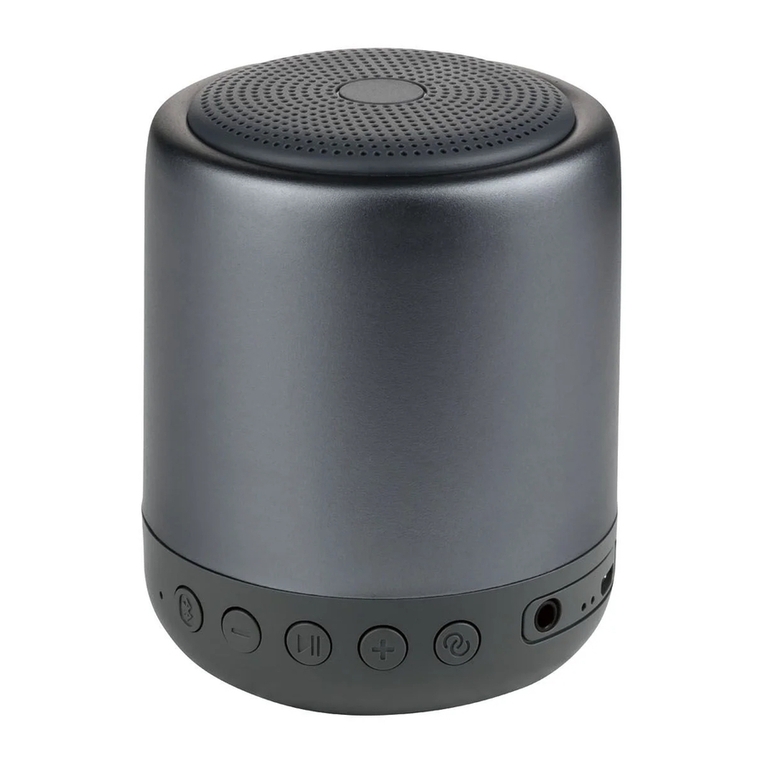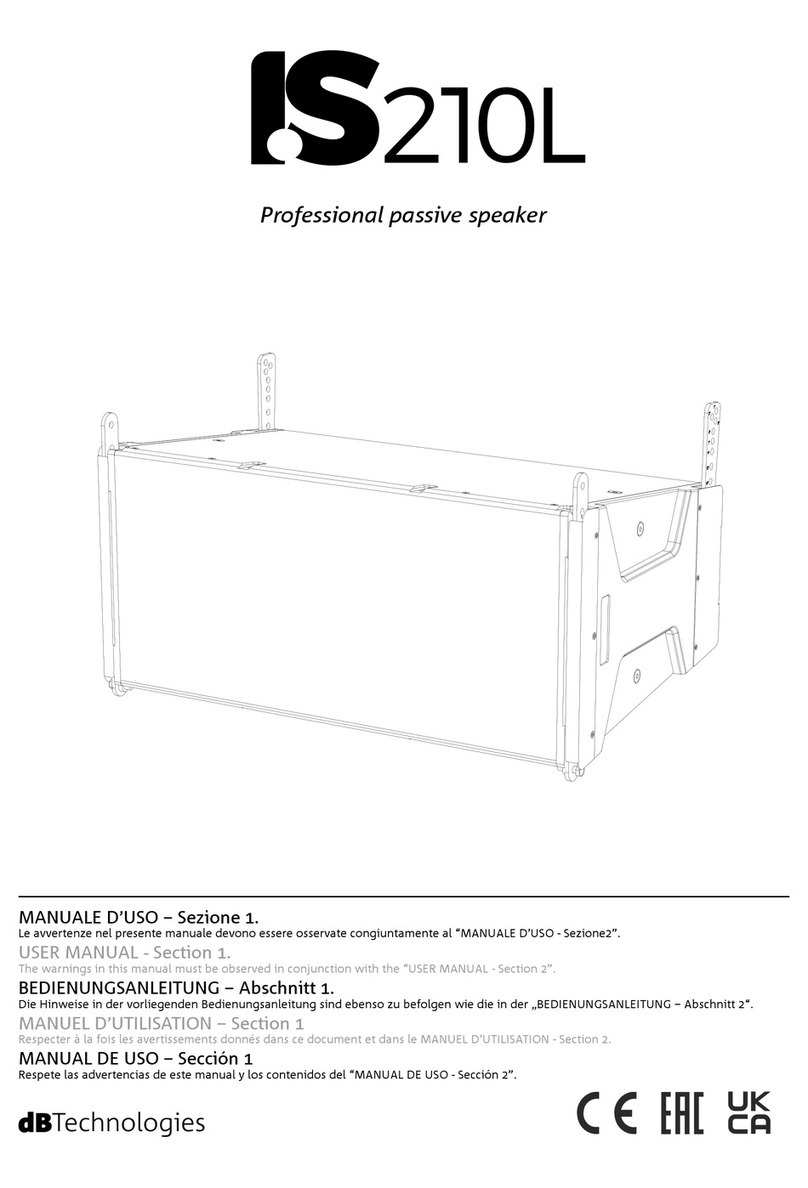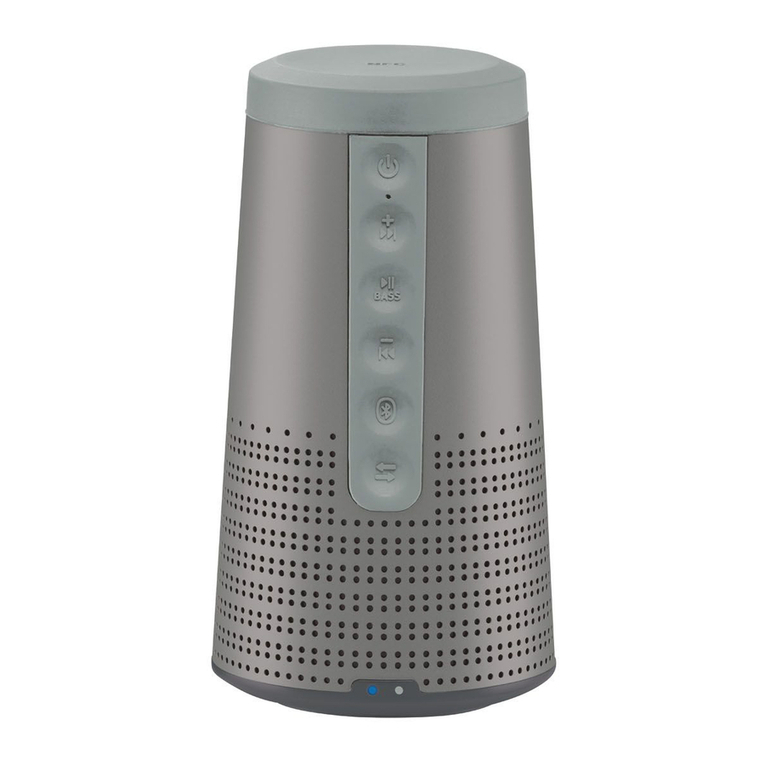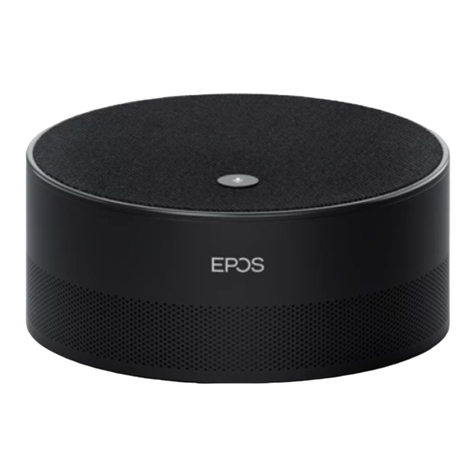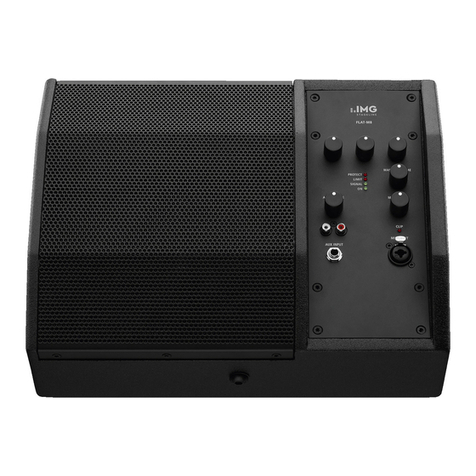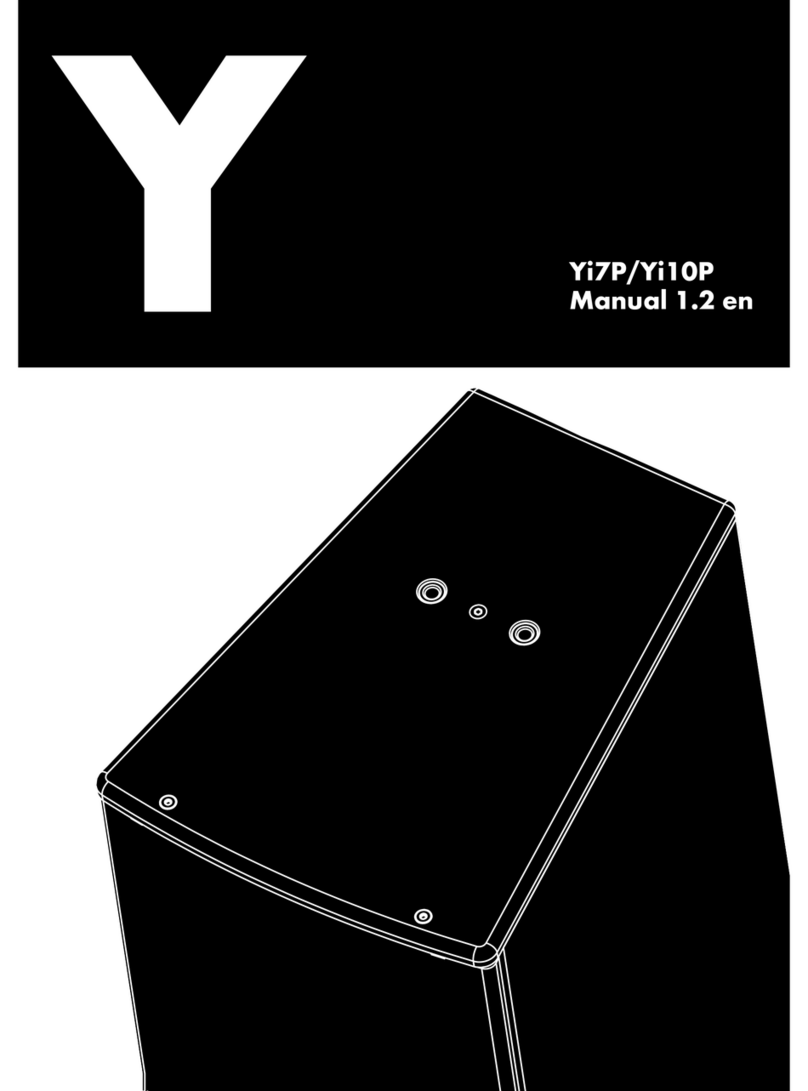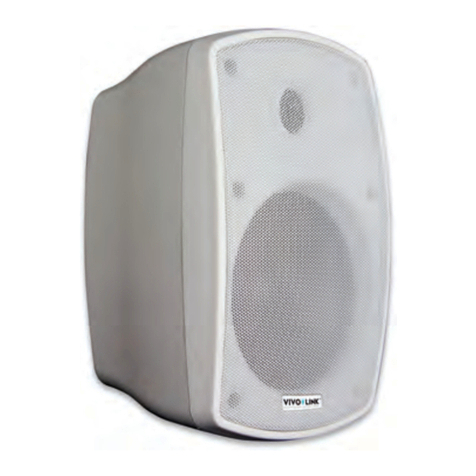
optional rack mount kit (see sections ‘Flush
mounting’ and ‘Accessories’).
Before connecting up, ensure that the
mains switch is off (see Figure 2). Check that
the mains voltage selector is correctly set to
your local voltage. Audio input is made via a
10kOhm balanced XLR connector, but unbal-
anced leads may be used as long as pin 3 is
grounded to pin 1 of the XLR. Once connec-
tion has been made, the speakers are ready
to be powered-up.
Setting the input sensitivity
Adjustment of the input sensitivity of each
speaker can be made to match the output of
the mixing console or other source, by use of
the input sensitivity control on the rear panel
(see Figure 2). A small screwdriver is needed
for the adjustment. The manufacturer default
setting for this control is -6 dBu (fully clock-
wise) which gives an SPL of 100 dB @1m
with -6 dBu input level. To get the full output
level of 120 dB SPL from the 1038B an input
level of +14 dBu is needed at this setting.
Respectively, the full output level of the 1037C
is reached at an input level of +10 dBu.
Setting tone controls
The acoustic response of the system may
also have to be adjusted to match the acous-
tic environment. The adjustment is done by
setting the five tone control switch groups
‘bass tilt’, ‘bass roll-off’, ‘bass level’, ‘mid
level’ and ‘treble level’ on the rear panel of
the amplifier. The manufacturer’s default set-
tings for these controls are ‘All Off’ to give
a flat anechoic response. See Table 1 for
suggested tone control settings in differing
acoustic environments. Figures 7 and 8 show
the effect of the controls on the anechoic
response. Always start adjustment by setting
all switches to the ‘OFF’ position. Then set
only one switch per group to the ‘ON’ posi-
tion to select the response curve required. If
more than one switch is set to ‘ON’ (within
one switch group) the attenuation value is no
longer accurate.
Vertical / horizontal mounting
The speakers are delivered either for verti-
cal or horizontal mounting. In the horizontal
mounting position the bass drivers should
point inwards to obtain better low frequency
coupling. If the speaker positioning needs to
be changed, the DCW plate can be rotated
so that the midrange driver remains always
located at the bottom of the DCW. Remove
the four corner screws of the DCW and pull
the plate carefully out without stressing the
wires and the gasket. Rotate the plate 90
degrees in the appropriate direction and
remount the screws.
Flush mounting
The 1037C and 1038B can be used flush
mounted into the control room wall, which
offers some acoustical benefits. No cabinet
edge diffraction will occur, resulting in an
improved response, especially at midrange
frequencies. Low frequency reflections from
the wall behind the speaker can be avoided,
which improves the low frequency response
and efficiency and allows the speaker to work
in half space conditions. In terms of installa-
tion and orientation, the speaker’s acoustical
axis (See Figure 1.) should also point directly
to the listening position. The speaker should
be vertically aimed so that the acoustical axis
of the two speakers meet midway between
the standing and seated listening position
(1.4m - 4’7” from the floor). In the horizon-
tal plane the speaker should be positioned
according to the standard stereophonic (60
degrees between left-right channels) or mul-
tichannel (ITU-R BS.775-1) placement rec-
ommendation.
The ceiling, side walls and especially the
rear wall should be acoustically absorbent
at low frequencies. The wall in which the
speakers are mounted should have a high
Speaker mounting
position
Bass
roll-off
Bass tilt Bass
level
Midrange
level
Treble
level
Free anechoic response None None None None None
Free standing in a
damped room
None -2 dB None None None
Free standing in a
reverberant room
None -2 dB -2 dB None None
In a corner -2 dB -2 dB -2 dB None None
Soffit mounted in a control
room wall
None None -4 dB None None
Table 1. Suggested tone control settings for different acoustic environments
H1 mm (in) W1 mm (in) H2 mm (in) W2 mm (in)
1037C 540 (21 1/4") 200 (7 7/8") 230 (9 1/16") 170 (6 11/16")
1038B 650 (25 5/8") 240 (9 1/2") 275 (10 7/8") 210 (8 1/4")
Figure 1. Location of the acoustic axis Figure 2. Amplifier panel layout of the 1037C.
-2
-4 dB
-6
-8
BASS
ROLL-OFF
INPUT SENSITIVITY
SIGNAL INPUT
INPUT SENSITIVITY
REQUIRED FOR
100dB SPL@1m.
REFER TO
OPERATING MANUAL
FOR MAXIMUM SPL.
PIN 1 = GROUND
PIN 2 = + INPUT
PIN 3 = - INPUT
˜
MAINS INPUT
50 / 60 Hz
300 Watts
115 / 230 V
ON
MAINS
VOLTAGE
SELECTOR
2
3
-4+4
1
dBu
+6 -6
+2 0-2
ENSURE THAT THE CORRECT VOLTAGE IS SELECTED BEFORE
CONNECTING TO THE MAINS SUPPLY.
THIS EQUIPMENT IS CAPABLE OF PRODUCING SOUND
PRESSURE LEVELS IN EXCESS OF 85dB WHICH MAY CAUSE
PERMANENT HEARING DAMAGE.
NEVER OPERATE THIS EQUIPMENT WITHOUT A PROPER
EARTHED MAINS CONNECTION.
DO NOT EXPOSE TO WATER OR MOISTURE.
SERIAL
NUMBER
IT IS FORBIDDEN TO UNDO ANY SCREWS ON THIS EQUIPMENT.
SERVICING AND ADJUSTMENT MUST ONLY BE CARRIED OUT
BY QUALIFIED SERVICE PERSONNEL.
ELECTRIC SHOCK HAZARD!
WARNING
MADE IN FINLAND
www.genelec.com
1037C TRI-AMPLIFIED MONITORING SYSTEM
GENELECR
f
20Hz 100Hz
-4
-6
-8
0
-2
ALL OFF
MID
LEVEL
TREBLE
LEVEL
BASS
LEVEL
BASS
TILT
-1
-2
-3
-4 dB
-5
-6
MUTE
-2
-4 dB
-6
-8
OFF ON
OFF ON
OFF ON
-1
-2
-3
-4 dB
-5
-6
MUTE
OFF ON
-1
-2
-3
-4 dB
-5
-6
MUTE
OFF ON FOR ACCURATE OPERATION ONLY ONE
SWITCH IN EACH TONE CONTROL GROUP
SHOULD BE ON AT A TIME.
0
-1
-2
-3
-4
-5
-6
20Hz 400Hz 3kHz 20kHz
ALL OFF
0
20Hz 250Hz
dB
-6
-8
-4
-2
dB
FOR A FLAT FREE FIELD RESPONSE SET ALL
TONE CONTROLS TO OFF.
BASS
dB
MID
LEVEL CONTROLS
CAL POSITION
ALL TONE CONTROLS : OFF
INPUT SENSITIVITY : -6dBu
TREBLE
USING THE TONE CONTROLS
REFER TO THE OPERATING MANUAL FOR
SUGGESTED TONE CONTROL SETTINGS.
TREBLE,
MIDRANGE
AND BASS
LEVEL
SWITCHES
BASS TILT
AND
ROLL-OFF
SWITCHES
INPUT
SENSITIVITY
ADJUSTMENT
SIGNAL INPUT
CONNECTOR
MAINS VOLTAGE
SELECTOR,
MAINS
CONNECTOR
AND SWITCH







